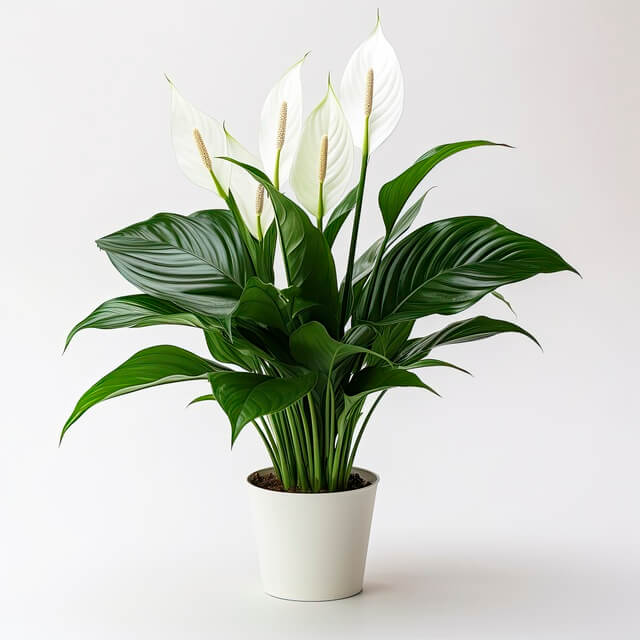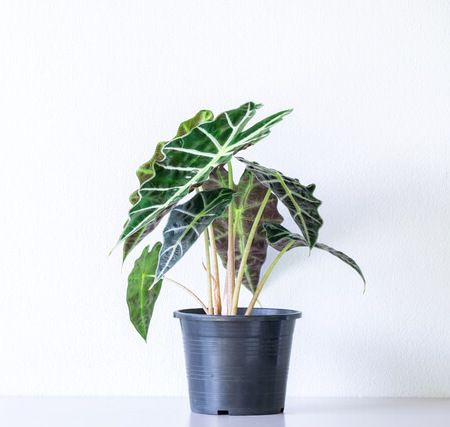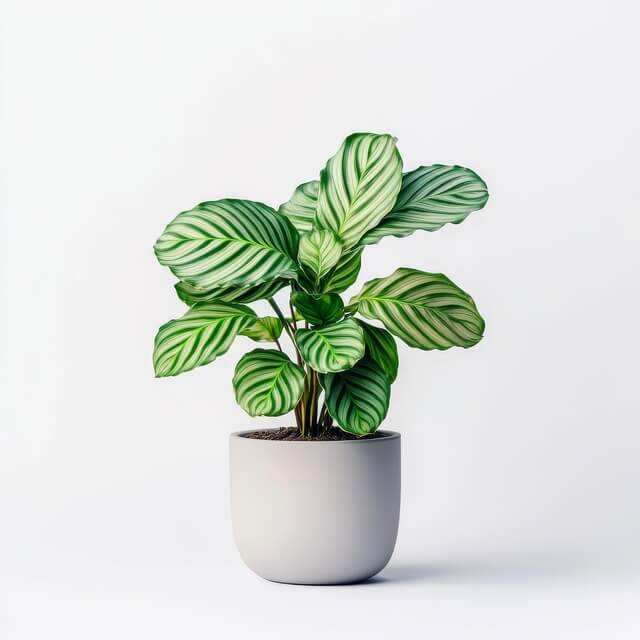Peace Lily
Spathiphyllum wallisii

The Peace Lily (Spathiphyllum) is a popular tropical houseplant known for its elegant white blooms and lush, dark green leaves. Native to Central and South America, it's beloved for its ability to thrive in low-light indoor spaces and its forgiving nature.
Peace Lilies are especially beginner-friendly thanks to their clear signals—when thirsty, their leaves droop dramatically, then perk up quickly after watering. Their blooms resemble white flags of peace, giving the plant its iconic name, and they can flower multiple times a year when properly cared for.
Beyond their aesthetic appeal, Peace Lilies are also known to help filter airborne toxins like formaldehyde and ammonia. They prefer evenly moist soil and moderate humidity, making them ideal for bathrooms or kitchens. With consistent care, they’ll reward you with reliable growth and regular blooms.
Quick Info
- Light: Medium
- Water: High
- Size: 1–4 feet tall and wide
- Humidity: Moderate
- Temp: 65–80°F (18–27°C)
- Flowering: Yes
- Type: Tropical
- Dog Safe: No
- Cat Safe: No
- Kid Safe: No
Toxicity Info
- Dog Safe: No
- Cat Safe: No
- Kid Safe: No
Notes for Pets: Contains calcium oxalate crystals; ingestion may cause irritation, vomiting, or drooling.
Notes for Kids: Not safe to ingest; may cause mouth irritation or stomach upset.
Care Instructions
- Keep soil evenly moist, but never soggy.
- Water when the top inch of soil feels dry.
- Prefers medium to low indirect light; avoid direct sun.
- Mist occasionally to maintain humidity.
- Wipe leaves clean to help the plant photosynthesize efficiently.
Common Problems
- Brown tips: Often from dry air or tap water with chlorine. Use filtered water and boost humidity.
- Yellowing leaves: Usually from overwatering — let soil dry slightly and check drainage.
- No blooms: Not enough light or nutrients. Try a brighter spot and light feeding.
- Root rot: Caused by soggy soil. Don’t let water sit at the bottom.
- Drooping: A sign it’s thirsty — usually perks up fast after watering.
FAQs
Usually from dry air or fluoride/chlorine in tap water—try using filtered water and misting the plant.
Typically once or twice a year, but with ideal conditions, it can bloom more frequently.
It can survive in low light but may not bloom without some indirect light.
No—it's toxic if ingested, so place it out of reach of curious pets and small children.


